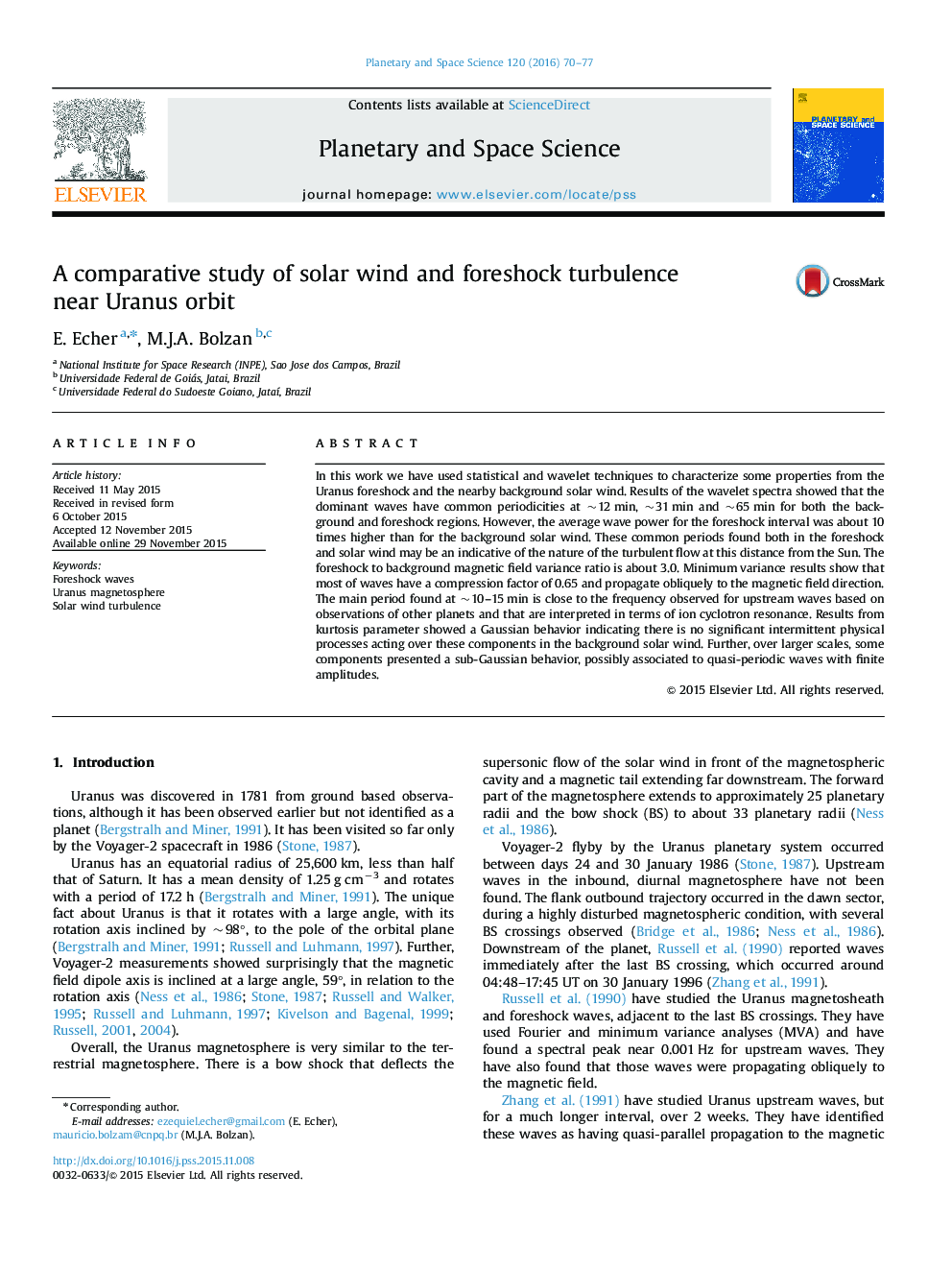| Article ID | Journal | Published Year | Pages | File Type |
|---|---|---|---|---|
| 8142883 | Planetary and Space Science | 2016 | 8 Pages |
Abstract
In this work we have used statistical and wavelet techniques to characterize some properties from the Uranus foreshock and the nearby background solar wind. Results of the wavelet spectra showed that the dominant waves have common periodicities at ~12Â min, ~31Â min and ~65Â min for both the background and foreshock regions. However, the average wave power for the foreshock interval was about 10 times higher than for the background solar wind. These common periods found both in the foreshock and solar wind may be an indicative of the nature of the turbulent flow at this distance from the Sun. The foreshock to background magnetic field variance ratio is about 3.0. Minimum variance results show that most of waves have a compression factor of 0.65 and propagate obliquely to the magnetic field direction. The main period found at ~10-15Â min is close to the frequency observed for upstream waves based on observations of other planets and that are interpreted in terms of ion cyclotron resonance. Results from kurtosis parameter showed a Gaussian behavior indicating there is no significant intermittent physical processes acting over these components in the background solar wind. Further, over larger scales, some components presented a sub-Gaussian behavior, possibly associated to quasi-periodic waves with finite amplitudes.
Related Topics
Physical Sciences and Engineering
Earth and Planetary Sciences
Geophysics
Authors
E. Echer, M.J.A. Bolzan,
